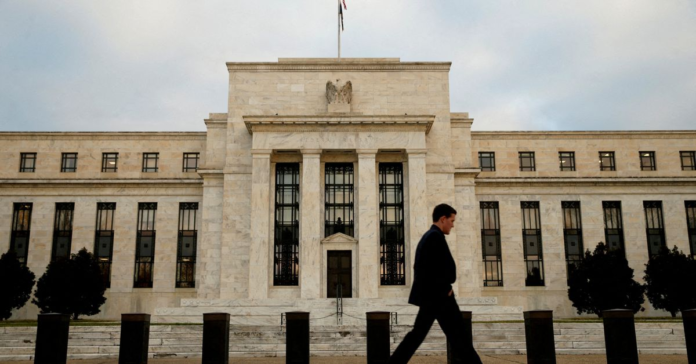July 13 (Reuters) – U.S. small businesses are paying the most for loans in 16 years as borrowing costs have skyrocketed under the Federal Reserve’s aggressive interest rate hikes, but new data shows they have yet to face a widely predicted credit crunch.
The average rate paid on short-term loans for small businesses shot up to 9.2% in June, up 1.4 percentage points from May’s reading – marking the largest increase in short-term borrowing costs since December 2006, according to data this week from the National Federation of Independent Business (NFIB).
The surging cost of borrowing is by design: In the ongoing effort to reduce demand and curb inflation, the U.S. central bank has tried to tighten credit conditions with 500 basis points worth of rate hikes since March 2022. But the recent improvement in the inflation outlook has meant that the highly anticipated clampdown on credit for the small business sector has yet to materialize in earnest.
Twenty-eight percent of firms surveyed by the NFIB borrowed on a regular basis in June – down from a three-year high in April but broadly in the same range of borrowing activity that prevailed in the years leading up to the coronavirus pandemic.
Meanwhile, loan approval rates stabilized or improved slightly after months of declines, according to a separate report by Biz2Credit, an online financing platform for small businesses.
Small banks approved 18.8% of loans in June, up one-tenth of a percentage point from May, marking the first increase since January, while the rate at big banks held steady at 13.4%, ending 11 straight monthly declines, Biz2Credit said.
Business owners echoed this stability, with just 6% of NFIB survey respondents reporting credit was recently harder to obtain than it was the last time they had sought it. That is down from a decade-high 9% three months earlier and generally in line with the historic average.
“There was a big expectation about recession that hasn’t come through, so I think the overall economic outlook has improved, and that has given more confidence to banks to restart the lending piece,” said Rohit Arora, the CEO of Biz2Credit.
BANKS’ CONSERVATIVE TILT
It is still unclear whether this relative stability will endure.
Despite recent modest improvements, both small and big banks are approving loans at half the pre-pandemic rate, and economists warn of a potential lag in the effects of aggressive rate hikes on credit availability. The banking sector turmoil unleashed by the collapse of Silicon Valley Bank and two other large U.S. lenders earlier this year may also prompt banks to grow more conservative.
Reuters Graphics
Annual growth in credit from U.S. banks is at a decade low and is likely soon to turn negative. The main drag for now is the largest drop ever in securities like bonds held on banks’ balance sheets: falling by more than 10% on a year-over-year basis, according to the Fed. Growth in loans, which represent 70% of all bank credit, is near its historical average but also on the decline.
Reuters Graphics
On top of that, demand for commercial and industrial loans in the U.S. central bank’s latest survey of bank loan officers was the lowest in about a decade as the second quarter began, which has fed through to a slowdown in business loan growth. Outstanding C&I loan balances were up just 3.4% near the end of June, down from double-digit increases earlier in the year and the lowest level in a year.
Commercial and industrial (C&I) loan growth has softened as U.S. banks, in a quarterly survey, reported weaker appetite for loans from firms, a scenario that closely followed previous recessions.
Three of the largest U.S. banks are scheduled to report second-quarter results on Friday, which will reveal more about how the increased cost of deposits and waning revenue from securities might affect credit availability for the rest of the year.
Reporting by Safiyah Riddle; Editing by Dan Burns and Paul Simao
Our Standards: The Thomson Reuters Trust Principles.
US small business lending holding up despite higher cost of credit
RELATED ARTICLES




